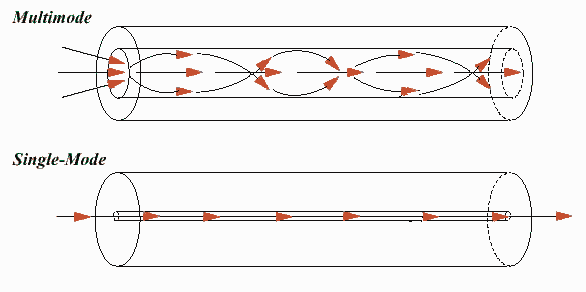What is cut off wavelength? When many people see the item they may ask such question. Well, cut off wavelength can be defined as the wavelength below a singlemode fiber wavelength and they usually acts as multimode fiber, meaning it will allow propagation of more than one mode at a time. In another word, cut off wavelength above singlemode operation but it is ensured in a singlemode fiber.
Fiber cut off wavelength depends on the method of fixing the fiber. We all know that fiber optic cable can be putted into loose tubes or tightly coated with elastomeric or PVC or Nylon, to make tight buffered fiber or the matrix to be fiber optic ribbon. Cut off wavelength reduces the numbers of bends in fiber, so the cut off wavelength plays an important role in singlemode fiber at the defining the wavelength region of singlemode fiber. It reminds me that I have met a product from Corning, it mainly told us the cut off wavelength is the quite important for the fiber in defining the region of singlemode operation and then Corning said, bends and stress makes the cut off wavelength to a lower value.
Cut-off wavelength is the wavelength above which an optical fiber will allow singlemode transmission. Cut off wavelength can also be defined as the wavelength below which multimode transmission starts. It just means that above a certain wavelength, multiple modes stopped and singlemode optical fiber (Related product: singlemode simplex fiber) is designed to a mode for transmission. Cut off wavelength is also a unique parameter of single mode fiber. There are two points we should know that normal cable and installation condition all reduce the cut off wavelength. The cable wavelength is more important than fiber cut off wavelength.
As for the multimode fiber, why we do not talk about it? Well, because the cut off wavelength is the wavelength below which multimode transmission. (Related product: multimode fiber patch cable). The fiber mode transmission acts as the figure. Thus, we also can see that cut off is also the feature of singlemode fiber, it is an unique characteristic for singlemode fiber. Thus it is clear that cut-off wavelength determines the fate of single mode transmission. ITU-T recommend that the cut off wavelength less than 1260nm or 1260nm for singlemode fibers. It means that the wavelength that below 1260nm is an acceptable single mode. We know that the 1310nm and 1550nm wavelength are used widely and with the introduction of DWDM and shifted fiber, 1260nm wavelength is not more acceptable than 1310nm. It means that singlemode fiber will allow a wavelength mode over 1261nm. Cut off wavelength is important for singlemode fiber, because it is the standards of condition and singlemode fiber to allow single mode transmission. Warm tips: Fiberstore is a famous fiber optic patch cords supplier. If you want to get related singlemode and multimode fiber cable, you can get them from here easily.

